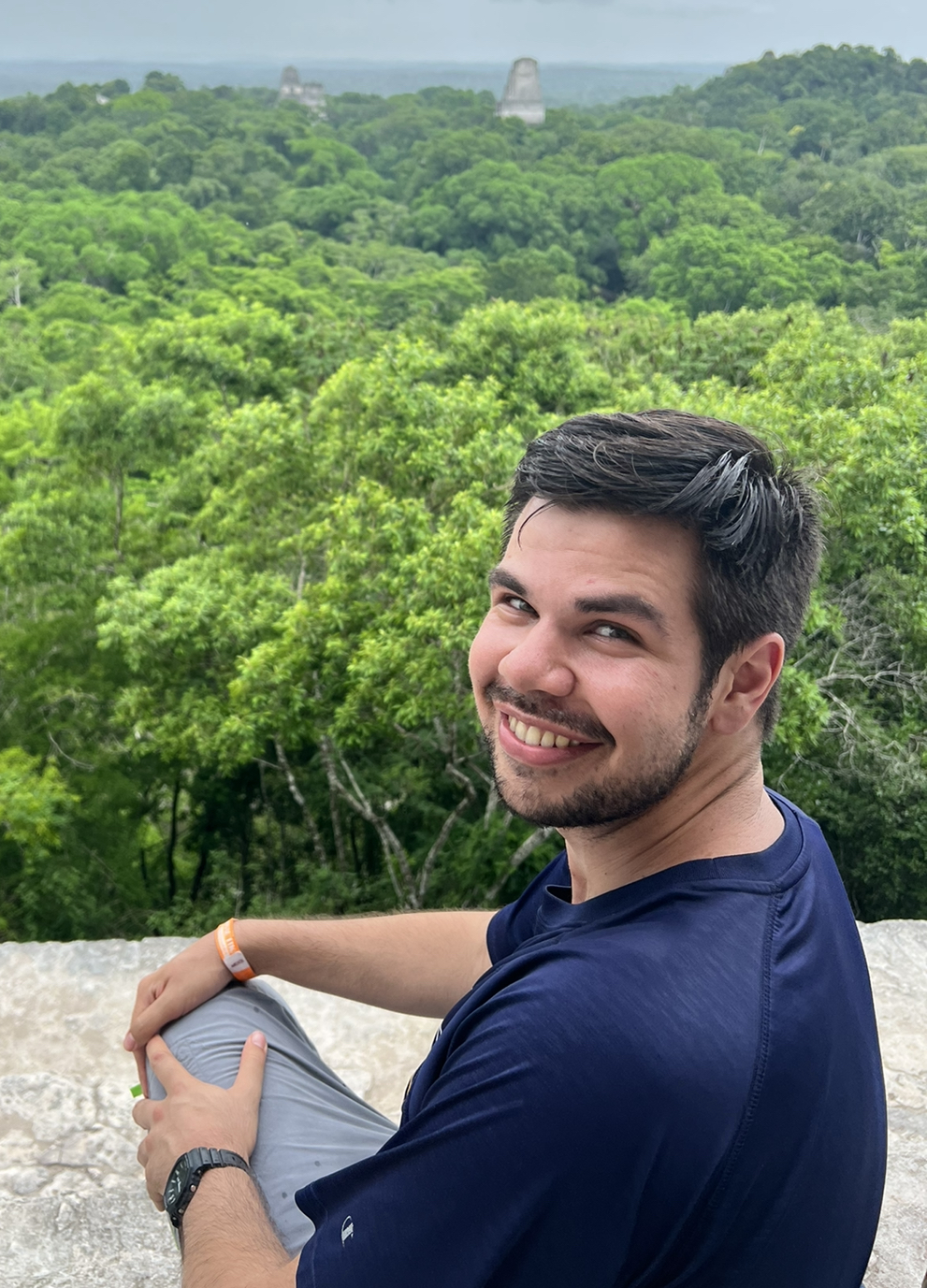About Me
My name is Glenn Richardson (he/him). I’m a sixth-year PhD candidate at Yale University and SLAC National Laboratory, nearing the end of my program. I work with both Brian Lenardo (SLAC) and David Moore (Yale) on the nEXO and GRIFFIN projects. I’m currently in New Haven, finishing up a GRIFFIN analysis and preparing to write my thesis.
I moved to New Haven (for the first time) in 2020 from Berkeley, CA, where I had just completed a post-baccalaureate year working at Lawrence Berkeley National Lab as part of the Warp-X collaboration. Before that, I was an undergraduate at UC Berkeley, where I worked with Daniel McKinsey on the LZ project and earned BAs in Physics and Mathematics.
Current Research Interests
My current research focuses on developing new techniques and technologies for liquid xenon (LXe) time projection chambers (TPCs), particularly the nEXO experiment — a proposed 5-tonne LXe TPC designed to search for the hypothesized decay process known as neutrinoless double beta decay. Observation of this process would be an immediate indication of physics beyond the Standard Model — including the discovery of a new category of fundamental particles (Majorana fermions) — and would shed light on the origin of the matter–antimatter asymmetry.
The first part of my thesis focuses on optimizing and developing nEXO’s charge readout system. nEXO plans to use conducting tiles on the TPC anode to collect ionization electrons produced by candidate events, providing a measurement of the energy, topology, and X/Y position of those events. My work involves simulating and optimizing the design of these tiles to maximize the experiment’s scientific reach. As part of my SCGSR fellowship, I collaborated with the SLAC and Stanford nEXO groups to develop a prototype charge readout module, which I deployed in a 23 kg LXe test stand at Stanford. This marked the first-ever implementation of nEXO’s charge readout concept.
The second half of my thesis explores how LXe TPCs can be leveraged to broaden their physics program beyond dark matter and neutrinoless double beta decay. Specifically, I study how charged-current interactions
\(\nu_e + ^{136}\mathrm{Xe} \rightarrow ^{136}\mathrm{Cs}^* + e^-\) on Xe-136 (136Xe-CC) can be used to perform background-free measurements of solar neutrinos and electron-coupled fermionic dark matter.
Recent observations of the low-lying nuclear structure of \(^{136}\)Cs have revealed isomeric states with lifetimes on the ~100 ns scale that are populated in these interactions. Their delayed de-excitation in LXe TPCs creates a time-coincident signal that can be used to tag 136Xe-CC events and discriminate against backgrounds to the level of \(10^{-9}\), potentially enabling background-free searches. The paper for this work is currently under review at PRD and the arXiv listing can be found here.
In addition to this nEXO simulation and analysis work, I have also investigated the nuclear structure of \(^{136}\)Cs using the GRIFFIN experiment at TRIUMF. This project aims to measure the lifetime and internal conversion rate of the 105 keV nuclear state in (^{136}\)Cs, which plays a key role in the 136Xe-CC interaction as the intermediate state between the two observed isomers. The results of this analysis are nearing completion, and we expect to begin writing the paper within the next few months.
Personal Interests
Some of my favorite things to do in the New Haven area are paddle-boarding on Yale Lake and boating on Long Island Sound. In the winter, when those are less accessible, I usually spend time at the New Haven pottery studio learning how to throw. I’m approaching the level of skill where a stranger might agree that the cups I make are actually cups. I’m hoping to try my hand at making bowls soon.
Previous Research Work
Prior to starting my PhD at Yale, I worked as a research assistant at LBNL under Jean-Luc Vey as part of the Warp-X group, where I developed algorithms for solving Maxwell’s equations with QED corrections. This work focused on incorporating photon–photon interactions into the Warp-X simulation in order to predict and validate the plasma mirror experiments that our collaborators were working on.
Before starting work at LBNL, I was an undergraduate at UC Berkeley majoring in Physics and Mathematics. There, I worked with Daniel McKinsey on the LUX-ZEPLIN experiment, which uses a two-phase LXe TPC to search for weakly interacting massive particle (WIMP) dark matter. My specific work involved designing and building a LXe purity monitor to be used in the group’s Xenon Breakdown Apparatus (XeBrA) experiment.
Contact Me
The best way to contact me is my Yale e-mail address: glenn.richardson@yale.edu
